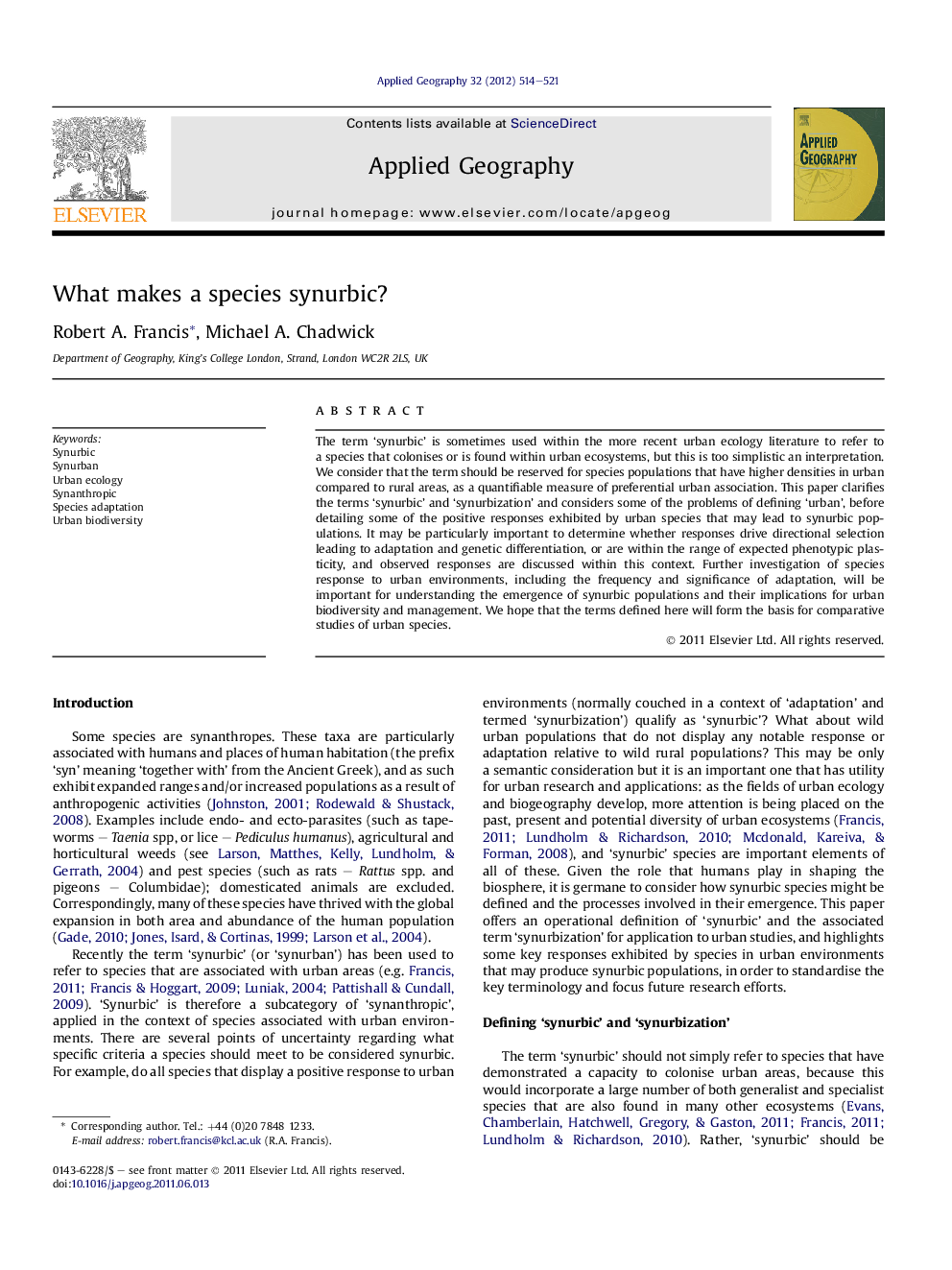| Article ID | Journal | Published Year | Pages | File Type |
|---|---|---|---|---|
| 83575 | Applied Geography | 2012 | 8 Pages |
The term ‘synurbic’ is sometimes used within the more recent urban ecology literature to refer to a species that colonises or is found within urban ecosystems, but this is too simplistic an interpretation. We consider that the term should be reserved for species populations that have higher densities in urban compared to rural areas, as a quantifiable measure of preferential urban association. This paper clarifies the terms ‘synurbic’ and ‘synurbization’ and considers some of the problems of defining ‘urban’, before detailing some of the positive responses exhibited by urban species that may lead to synurbic populations. It may be particularly important to determine whether responses drive directional selection leading to adaptation and genetic differentiation, or are within the range of expected phenotypic plasticity, and observed responses are discussed within this context. Further investigation of species response to urban environments, including the frequency and significance of adaptation, will be important for understanding the emergence of synurbic populations and their implications for urban biodiversity and management. We hope that the terms defined here will form the basis for comparative studies of urban species.
► ‘Synurbic’ is a term poorly defined in urban ecology. ► We propose a quantifiable definition of ‘synurbic’ to avoid generalisations. ► Synurbic species have greater urban than rural population densities. ► Positive responses to the urban environment that can lead to synurbic populations are reviewed.
